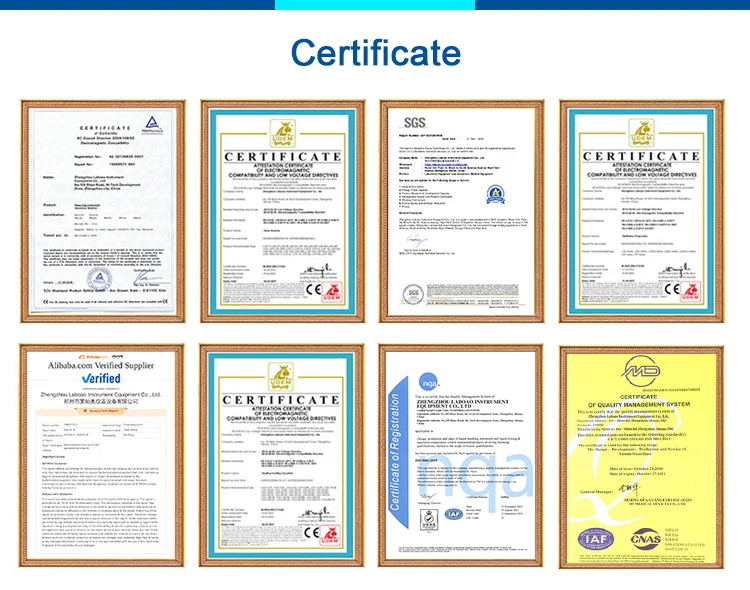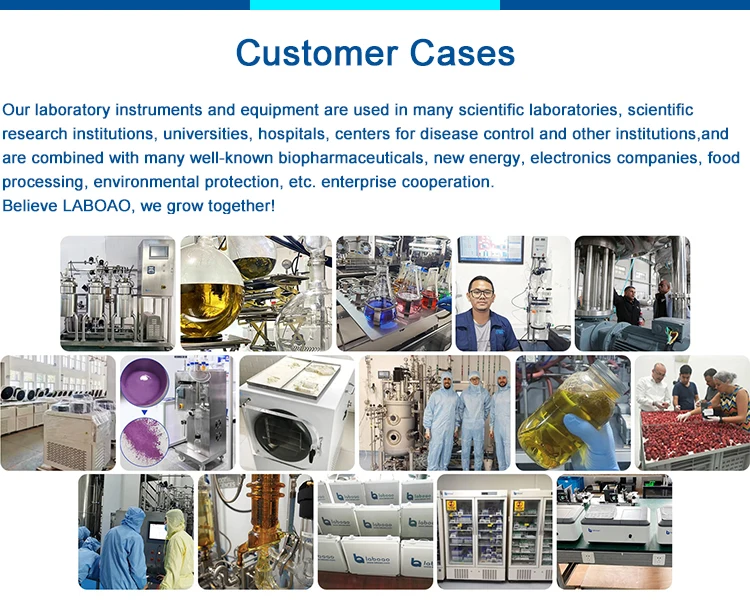Introducing a cutting-edge product equipped with American Marlow semiconductor refrigeration sheets, delivering a remarkable maximum temperature change rate of over 5 degrees per second and ensuring durability with over 1,000,000 cycles. This advanced system integrates multiple technologies seamlessly, featuring the WIMDOW operating system and a full-color touch screen. Impressively, it can independently operate three modules, including computer online functionality, printing capabilities, and an expansive big data storage and expansion function. These integrated features elevate the performance of qualitative PCR products to unprecedented levels, addressing the demand for higher experimental requirements. The product's powerful and multifunctional design is poised to meet the diverse needs of researchers, providing an exceptional tool for cutting-edge experiments.

| Model |
LPCR-3XG |
| Capacity |
3×(32×0.2ml ) |
| Temperature Range |
0~100℃ |
| Heating Rate |
5℃/s |
| Cooling Rate |
4℃/s |
| Uniformity |
≤±0.3℃ |
| Accuracy |
≤±0.2℃ |
| Display Resolution |
0.1℃ |
| Temperature Control |
Block\Tube |
| Ramping Rate Adjustable |
0.1~5℃ |
| Gradient Temp. Range |
30~100℃ |
| Gradient Spread |
1~30℃ |
| Hot Lid Temperature |
30~110℃ |
| Hot Lid Height Adjustable |
Stepless Adjustable |
| Number of Programs |
10000 +(USB FLASH) |
| Max. No. of Step |
30 |
| Max. No. of Cycle |
100 |
| Time Increment/Decrement |
1 Sec ~ 600 Sec(support Long PCR test) |
|
- Precision Temperature Control: Experience unparalleled precision with our PCR instrument featuring a special long-life Peltier module, independently controlling six temperature zones. This cutting-edge technology allows researchers to achieve precise temperature management simultaneously across multiple zones, providing unmatched flexibility and accuracy in experimental conditions.
- Durable Engineering Design: Our PCR instrument is engineered for durability, featuring a reinforced aluminum module treated with anodic oxidation technology. This not only ensures rapid thermal conductivity but also enhances corrosion resistance, making the system robust and reliable for prolonged and demanding experimental use in various environments.
- Rapid Temperature Transitions: Save valuable time in your experiments with our PCR instrument's rapid rise and cooling rate, reaching an impressive 5 ℃ / s. Swift temperature transitions are crucial for optimizing experiment efficiency, and this feature ensures researchers can achieve rapid changes, maximizing productivity in their work.
- Multitasking PCR Gradient Programs: Unlock new possibilities with independent control of the three-slot module, allowing simultaneous operation of three different PCR gradient programs. This unique capability empowers researchers to run multiple experiments concurrently, increasing productivity and flexibility in experimental design to meet the diverse needs of laboratories.
- User-Friendly Interface with Advanced Features: Seamlessly navigate your experiments with our user-friendly PCR instrument interface. Boasting a Windows interface, color touchscreen control, and an 8-inch TFT display with graphical menu navigation, this instrument provides an intuitive and advanced user experience. Additional features such as one-button rapid incubation, real-time progress display, GLP experiment reporting, and user login management ensure accessibility for researchers of all levels, making it a powerful and user-centric tool for your laboratory.





1. Q: How does the Peltier module's long-life feature contribute to the reliability of temperature control, and can you provide details on its durability in practical laboratory settings?
A: The long-life Peltier module in our PCR instrument is designed to ensure precise and reliable temperature control over an extended period. It independently controls six temperature zones, offering unparalleled flexibility. The durability of this module is proven through practical usage, with a maximum temperature change rate exceeding 5 degrees per second and enduring over 1,000,000 cycles. This robust performance in laboratory settings underscores its reliability for various experiments.
2. Q: The rapid rise and cooling rate of 5 ℃ / s is impressive. How does this speed benefit experiments, and are there specific applications where this feature is particularly advantageous?
A: The rapid rise and cooling rate of 5 ℃ / s significantly accelerates experimental processes, saving valuable time. This feature is particularly advantageous in experiments where swift temperature transitions are critical, such as PCR applications that demand quick denaturation, enzyme digestion/enzyme ligation, ELISA, and more. The instrument's capability to achieve such rapid temperature changes enhances overall experiment efficiency.
3. Q: Could you elaborate on the user-friendly interface and advanced features, especially how they contribute to the overall user experience and experiment management?
A: Our PCR instrument boasts a user-friendly interface with a Windows operating system, a color touch screen, and an 8-inch TFT display. The graphical menu navigation and advanced features, including one-button rapid incubation, real-time progress display, and GLP experiment reporting, contribute to a seamless user experience. Researchers of all levels can easily navigate the system, ensuring efficient experiment management and data analysis.
4. Q: The option for independent control of three different PCR gradient programs sounds promising. Can you provide examples of scenarios where researchers might find this capability particularly beneficial?
A: The independent control of three different PCR gradient programs allows researchers to run multiple experiments concurrently. This capability is particularly beneficial in scenarios where laboratories have diverse experimental requirements, enabling the simultaneous execution of varied PCR experiments. It enhances productivity and flexibility in experimental design, catering to the dynamic needs of different research projects.
5. Q: How does the PCR instrument address data security concerns, especially with features like user login management and password protection?
A: Our PCR instrument prioritizes data security with user login management, three-level authority, and password protection functions. These features ensure that sensitive experiment data is safeguarded. Researchers can control access levels, manage user permissions, and protect valuable data, contributing to a secure and compliant laboratory environment.

bio-equip.cn

